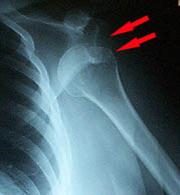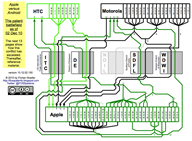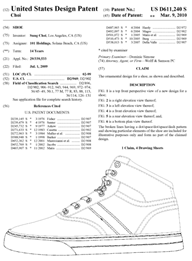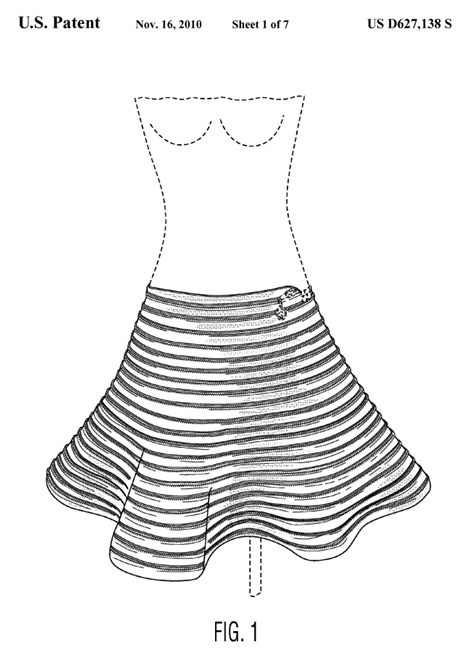By Jason Rantanen
WiAV Solutions LLC v. Motorola, Inc. (Fed. Cir. 2010)
Panel: Rader, Linn (author), Dyk
WiAV is the purported exclusive licensee of seven patents relating to aspects of signal transmission and data encoding/decoding owned by Mindspeed Technologies, Inc. In 2009, WiAV sued a set of companies including Motorola, Inc.; Nokia Corporation; Palm, Inc.; and Sony Ericsson Mobile Communications (USA), Inc. for infringement of the Mindspeed patents. The defendants contended, and the district court agreed, that WiAV lacked constitutional standing to assert the patents because WiAV is not an exclusive licensee of the patents under Textile Productions, Inc. v. Mead. Corp., 134 F.3d 1481 (Fed. Cir. 1998), which they argued holds that a party cannot be an exclusive licensee of a patent when a third party has the right to license the patent.
In reversing the district court's dismissal, the CAFC rejected this argument, instead holding that "a licensee is an exclusive licensee of a patent if it holds any of the exclusionary rights that accompany a patent." Slip. Op. at 17 (emphasis added). This decision is in the vein of the court's earlier decision this year in Alfred E. Mann Foundation For Scientific Research v. Cochlear Corp., 604 F.3d 1354, in which it concluded that a licensee is an exclusive licensee of a patent despite retaining the ability to license the patent to settle lawsuits.
Scope of the Licensing
The licensing rights at issue were held by six third parties, and stemmed from a series of spin-offs and other agreements that occurred as the patents were transferred from company to company. For example, when Rockwell International Corporation, the original owner of the Mindspeed patents, assigned them to Conexant, the second owner, its subsidiary, Rockwell Science Center, received a limited, non-exclusive license to use the patents in connection with its business, along with the right to sublicense to Rockwell International and its "Affiliates," or to transfer the license in connection with the sale of the respective businesses to which the intellectual property rights relate. The district court found that several of these licensees retained a limited right to license the patents in the field of wireless handsets, and concluded that under Textile Productions, WiAV could thus not be an exclusive licensee of the Mindspeed Patents.
Any Exclusionary Rights
On appeal, the CAFC rejected the argument that, under Textile Productions "a licensee cannot be an exclusive licensee of a patent if others retain the right to license the patent." Slip. Op. at 11. Turning straight to the constitutional analysis, the court held that the standing determination focuses only on whether a party has any exclusionary right in a patent:
Because the legally protected interests in a patent are the exclusionary rights created by the Patent Act, a party holding one or more of those exclusionary rights—such as an exclusive licensee—suffers a legally cognizable injury when an unauthorized party encroaches upon those rights and therefore has standing to sue.
…
Thus, the touchstone of constitutional standing in a patent infringement suit is whether a party can establish that it has an exclusionary right in a patent that, if violated by another, would cause the party holding the exclusionary right to suffer legal injury. Contrary to the suggestion of the Defendants, neither this court’s Textile Productions nor Mars decision freed the constitutional standing inquiry from its legal injury mooring.
Slip Op. at 14-15. Textile Productions, on the other hand, involved only the narrow question of whether a particular type of contract, a requirements contract for a patented product, automatically converts the exclusive supplier into an exclusive licensee. "Nowhere did the Textile Productions court suggest that a party holding one or more of the exclusionary rights in a patent does not have standing to sue to protect those rights against infringement by an unauthorized third party. Nor is there any indication that the court created a bright-line rule that a party cannot be an exclusive licensee of a patent if others have the right to license the patent." Slip. Op. at 16.
The CAFC did impose one important limitation on the broad rule for standing: "Because an exclusive licensee derives its standing from the exclusionary rights it holds, it follows that its standing will ordinarily be coterminous with those rights." Slip Op. at 17. Thus, an exclusive licensee may have standing to sue some parties, but not others; it may also lack standing to sue a party who has the ability to obtain a license from another party with the right to grant it.
Applying its holding, the court concluded that none of the pre-existing licenses granted the right to license the Defendants to practice the patents in WiAV's field of exclusivity, and thus WiAV possessed constitutional standing for this case.
Note: WiAV does not disturb the requirement that "[a]n exclusive licenseee generally must join the patent owner to the suit to satisfy prudential standing constraints, i.e., the 'judicially self-imposed limits on the exercise of federal jurisdiction.'" Slip Op. at 14-15, fn. 1. Here, WiAV had satisfied those concerns by adding Mindspeed to the suit as the "defendant patent owner."
 Injured Reserve: I've been on injured reserve for the past few weeks with both arms substantially immobilized, but I am now back (at least until my shoulder surgery next week). I am now going through a load of unread e-mails. If you sent me an e-mail or left a phone message during this time, I will respond as soon as possible. – Dennis Crouch
Injured Reserve: I've been on injured reserve for the past few weeks with both arms substantially immobilized, but I am now back (at least until my shoulder surgery next week). I am now going through a load of unread e-mails. If you sent me an e-mail or left a phone message during this time, I will respond as soon as possible. – Dennis Crouch  A bite out of Apple: At least one analyst is
A bite out of Apple: At least one analyst is 
 Fashion & Design Patent Rights: Some fashion industry markets have found design patents as valuable. These include eyewear, shoes, handbags, and jewelry. Despite widespread and growing use, fashion industry leaders have continued to push additional forms of protection that are easier to obtain.
Fashion & Design Patent Rights: Some fashion industry markets have found design patents as valuable. These include eyewear, shoes, handbags, and jewelry. Despite widespread and growing use, fashion industry leaders have continued to push additional forms of protection that are easier to obtain.
